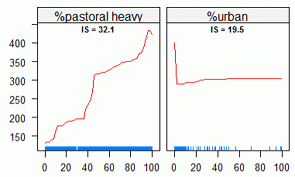
Content supplied by Irrigation NZ
IrrigationNZ has asked NIWA to produce a map of where Dissolved Inorganic Nitrogen levels in New Zealand fresh waterways exceed 0.8 mg per litre – this is the limit set by Board of Inquiry in its draft decision for the Tukituki Plan change which will determine the future of the Ruataniwha dam.
The Board has until June 28 to make its final decision.
‘This map [will] help us understand what the consequences will be if this number is set as a precedent for New Zealand’s fresh waterways,’ says Andrew Curtis, IrrigationNZ CEO.
Research found that all waterways in highly productive fertile plains of the country exceeded the limit.
This was 10% of 622 sites mapped through New Zealand.
This means that the farms which produce the bulk of New Zealand’s food for consumption and export will be in breach and be facing significant reductions.
‘Having to claw back to these limits will significantly impact production and will detrimentally effect local communities which rely on farming and food processing industries to provide thousands of jobs in factories,’ says Curtis.
‘If we are to not paralyse New Zealand’s economy in the short to medium term we need to set ourselves up with achievable goals in regards to nutrient management,’ he says.
‘Reducing the environmental footprint of farming in New Zealand is critical,’ says Mr Curtis.
‘But we need to do this in realistic ways which do not cut the lifeline to much of New Zealand and do not stagnate our economy.’


7 Comments
This is just scare tactics. I don't believe a word and Im a farmer.
If we sacrifce the environment for the dollar then we will be the losers in the end. The land cannot cope with the sort of farming intensification the govt has in mind and they need to go back to the drawing board.
The absolute worst thing we could do is to do that for the sake of foreign farm owners.
Wake up, NZ we need to do other things and National needs to be thinking about things like how many people is enough and how many cows is enough. Turning everything into dairying is mad and if the land is not suitable for that sort of farming now, it never truly will be sustainable.
Thumbs up from me raegun. I see National appear to be putting their changes to the RMA on the line for this election much like they did for asset sales last time.
I didn't get it from the article so may have missed it, but what are the values based on, are they actually samples or guesstimates based on something else?
Thumbs up from me raegun. I see National appear to be putting their changes to the RMA on the line for this election much like they did for asset sales last time.
I didn't get it from the article so may have missed it, but what are the values based on, are they actually samples or guesstimates based on something else?
Farmers are smart - they will figure out how to maximise production and stay within limts. It might be they need more organic methods, or more scientific ones but given a problem, time and time again NZ farmers can figure out what needs to be done and get on with it!!
So, an article by Andrew Curtis of Irrigation NZ linking to a NIWA report.
http://www.interest.co.nz/sites/default/files/DIN%20NIWA.pdf
The report is short and should be read. I did looking for this statement:
Research found that all waterways in highly productive fertile plains of the country exceeded the limit.
NIWA doesn't say that but instead this:
Partial plots for the fitted model confirm that elevated DIN levels are strongly associated with the percentage of heavy pastoral landcover in the upstream catchment (Figure 3-3). Again, this result is consistent with RF predictions for the individual components of DIN, NO3-N and NH4-N, both of which tend to increase in catchments with a high proportion of pastoral landcover (Unwin et al. 2010). In particular, the result for DIN is very similar to predictions for NO3-N, which is the dominant component of DIN at most sites.
The graph is Figure 3.3 from the NIWA report and includes 6 predictors rather than 3:
Figure 3-3: Partial plots for the leading six predictors of median DIN in a RF model based on 622 sites. Successive panels show the importance score for each predictor (IS), and the partial dependence of DIN on each predictor (red line). Mean slope is in units of m/km; all other predictors are expressed as percentages .
Read the link now. Seems pretty straight forward to me, intensification can only happen if and when farmers find a way to mitigate the effects, as mentioned above we are pretty good at that.
I do note that there's no red dots within 30km of me, just playing the holier than thou card. ;)
We welcome your comments below. If you are not already registered, please register to comment.
Remember we welcome robust, respectful and insightful debate. We don't welcome abusive or defamatory comments and will de-register those repeatedly making such comments. Our current comment policy is here.